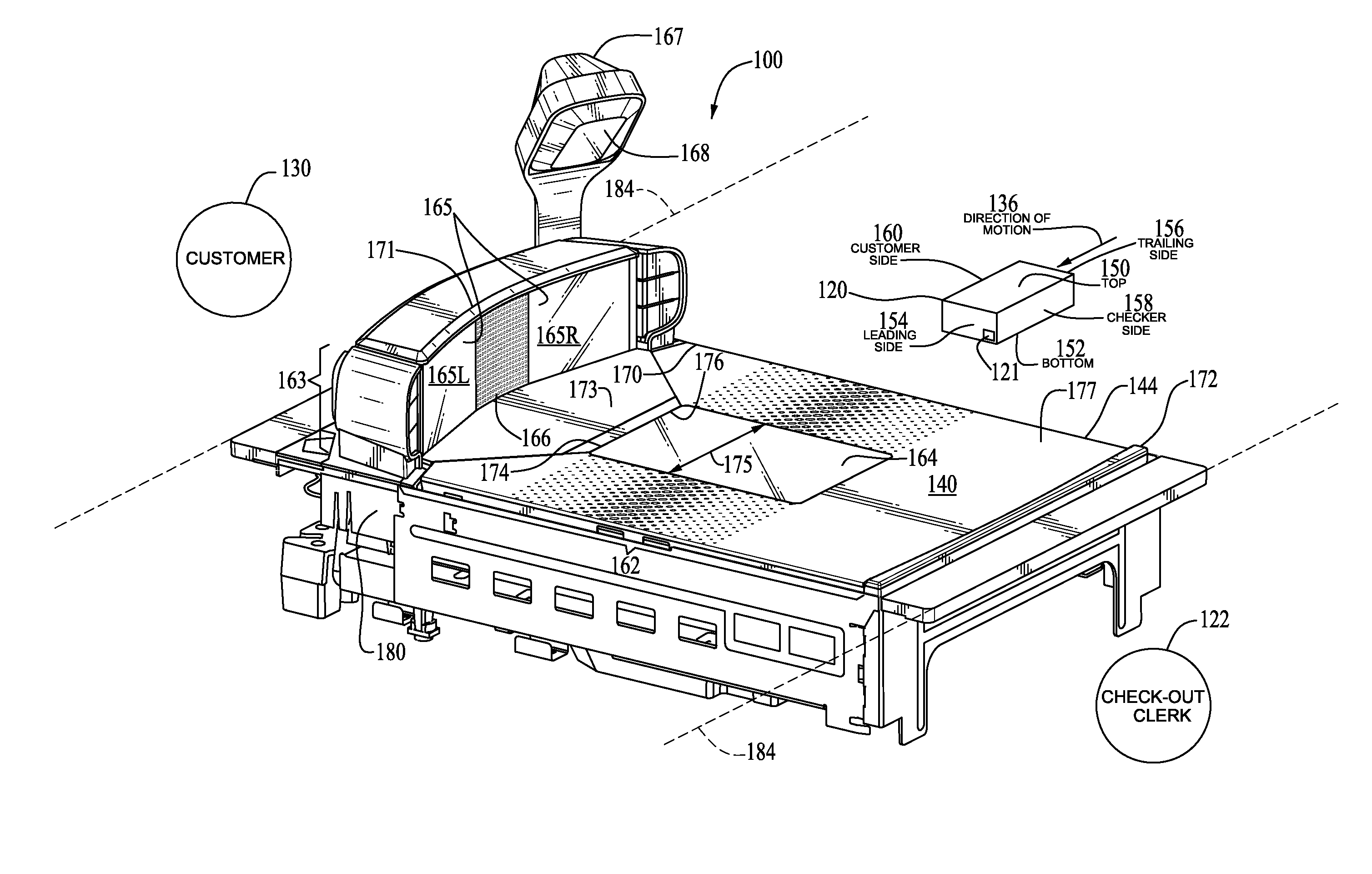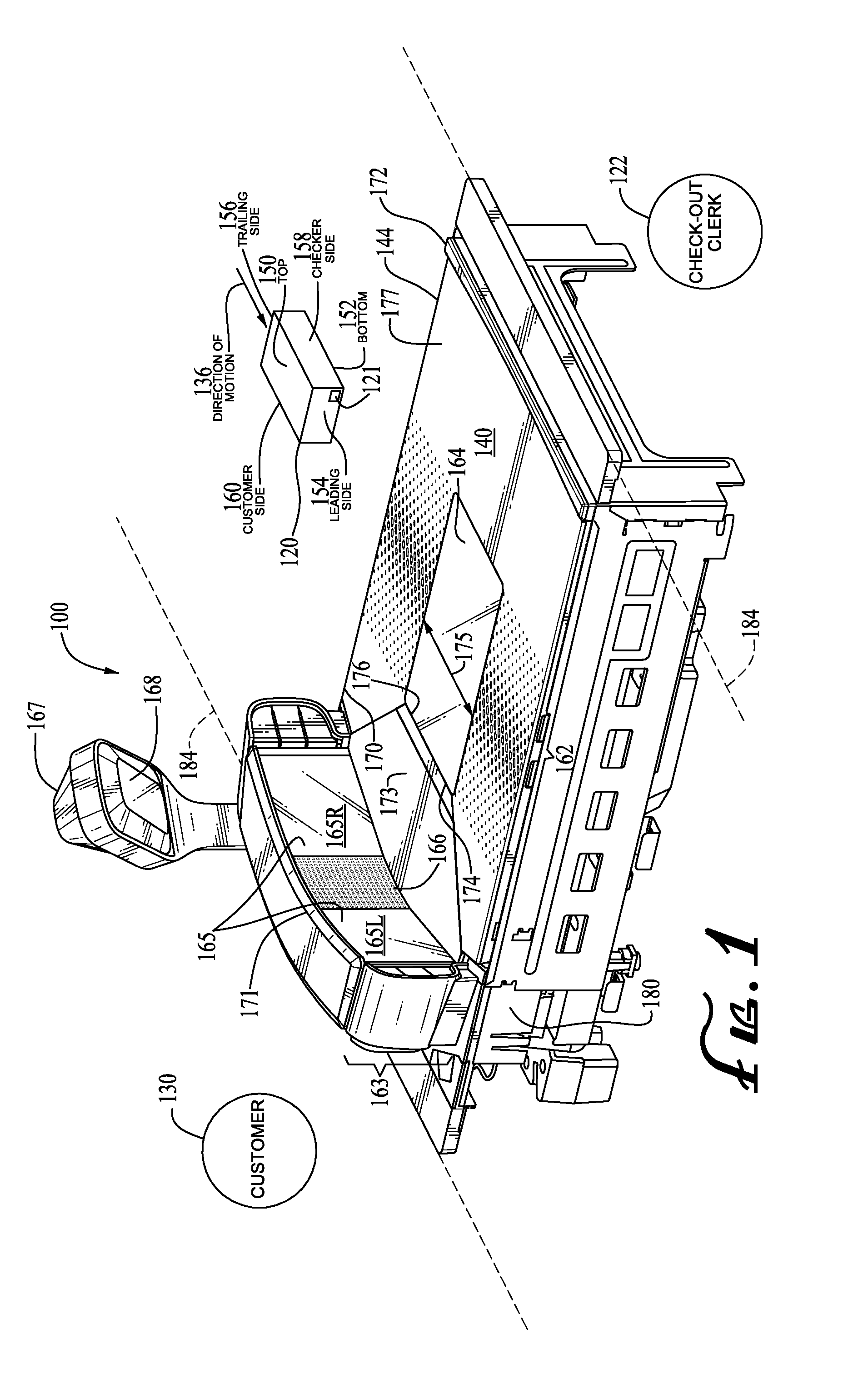Data reader platter with integral features delineating a data-reading sweep region
a data reader and sweep region technology, applied in the field of system and method of data reading, can solve the problems of falling off the scanner, occlude the scan volume, and easily wear off of indicators, and achieve the effect of reducing reflection and reducing specular reflection
- Summary
- Abstract
- Description
- Claims
- Application Information
AI Technical Summary
Benefits of technology
Problems solved by technology
Method used
Image
Examples
Embodiment Construction
[0020]For efficient use of a data reader, it is desirable to maximize a first-pass read rate by increasing the probability that an item will have its optical code successfully read on a single data-reading sweep across a read zone. For purposes of the present description, a region of the read zone that may tend to maximize a first-pass read rate for most items (and typically produces a successful read) is referred to as a preferred data-reading sweep region of the read zone.
[0021]For various reasons, the periphery of a preferred data-reading sweep region, as well as its general spatial location and dimensions with respect to a data reader, may be neither intuitive nor obvious to a user passing items through a read zone of the data reader. First, the read zone itself may be formed from one or more imaging devices that occasionally have partially overlapping read volumes configured to simultaneously read several sides of the item. For example, in both laser-based and imager-based type...
PUM
 Login to View More
Login to View More Abstract
Description
Claims
Application Information
 Login to View More
Login to View More - R&D
- Intellectual Property
- Life Sciences
- Materials
- Tech Scout
- Unparalleled Data Quality
- Higher Quality Content
- 60% Fewer Hallucinations
Browse by: Latest US Patents, China's latest patents, Technical Efficacy Thesaurus, Application Domain, Technology Topic, Popular Technical Reports.
© 2025 PatSnap. All rights reserved.Legal|Privacy policy|Modern Slavery Act Transparency Statement|Sitemap|About US| Contact US: help@patsnap.com



